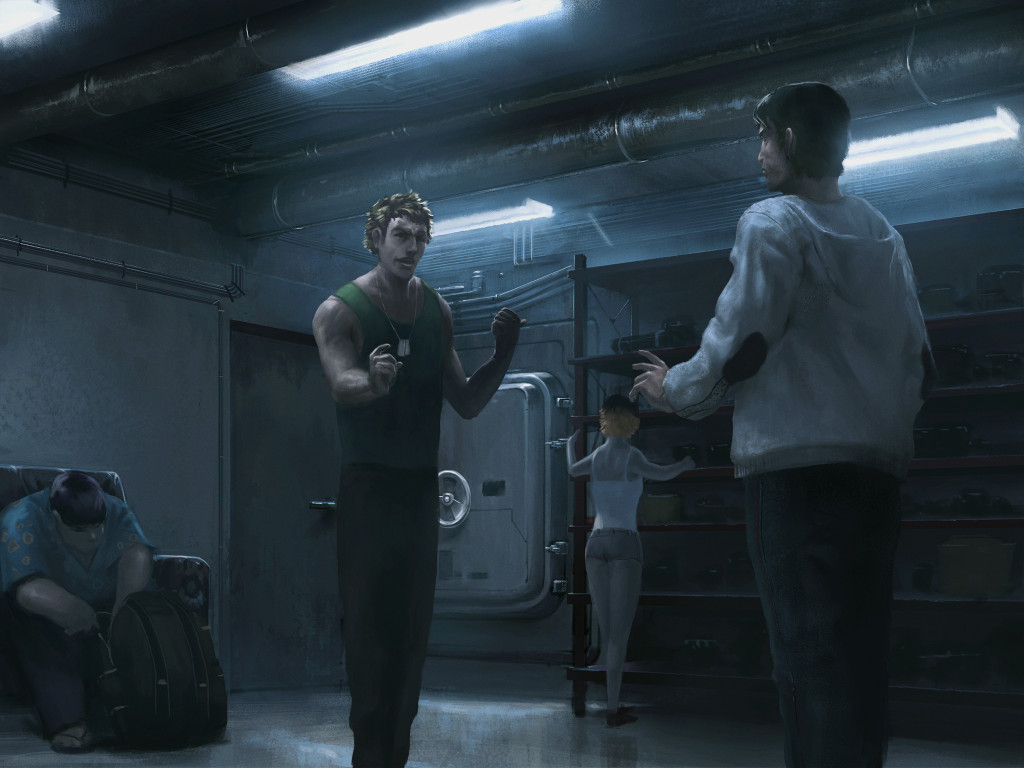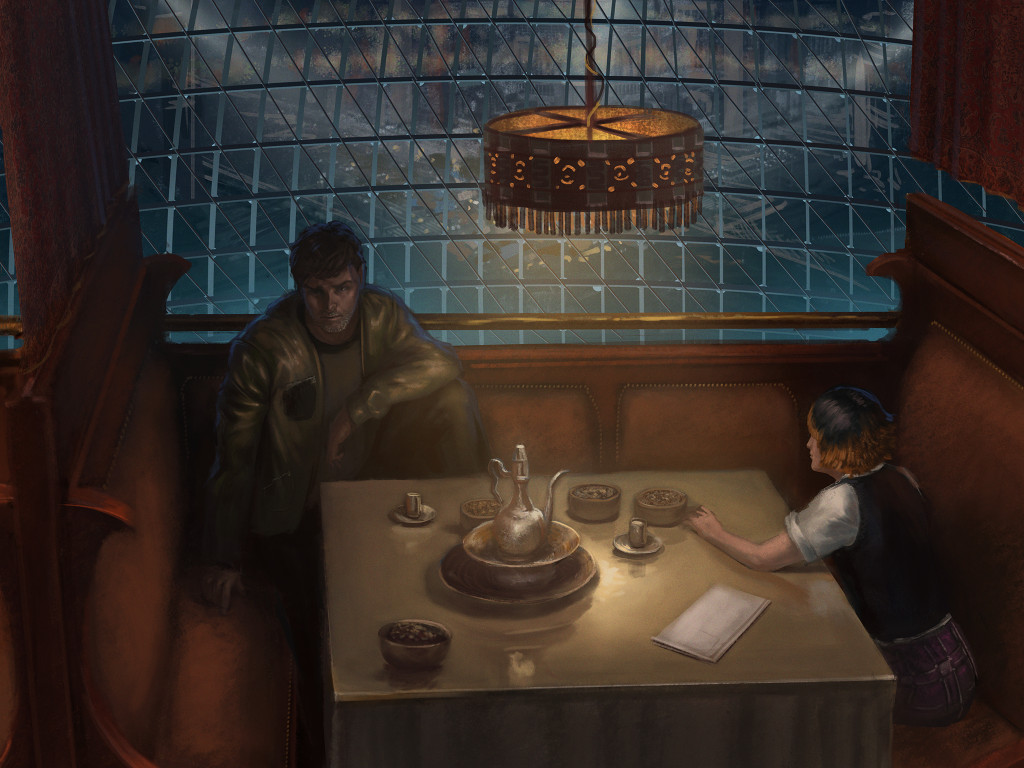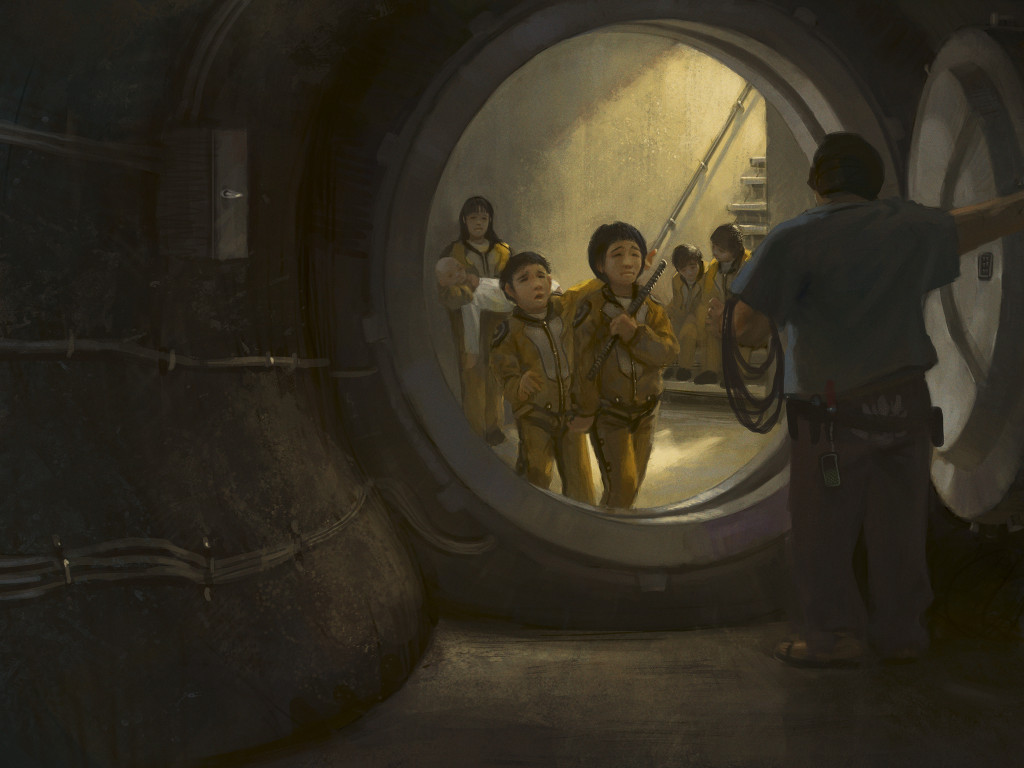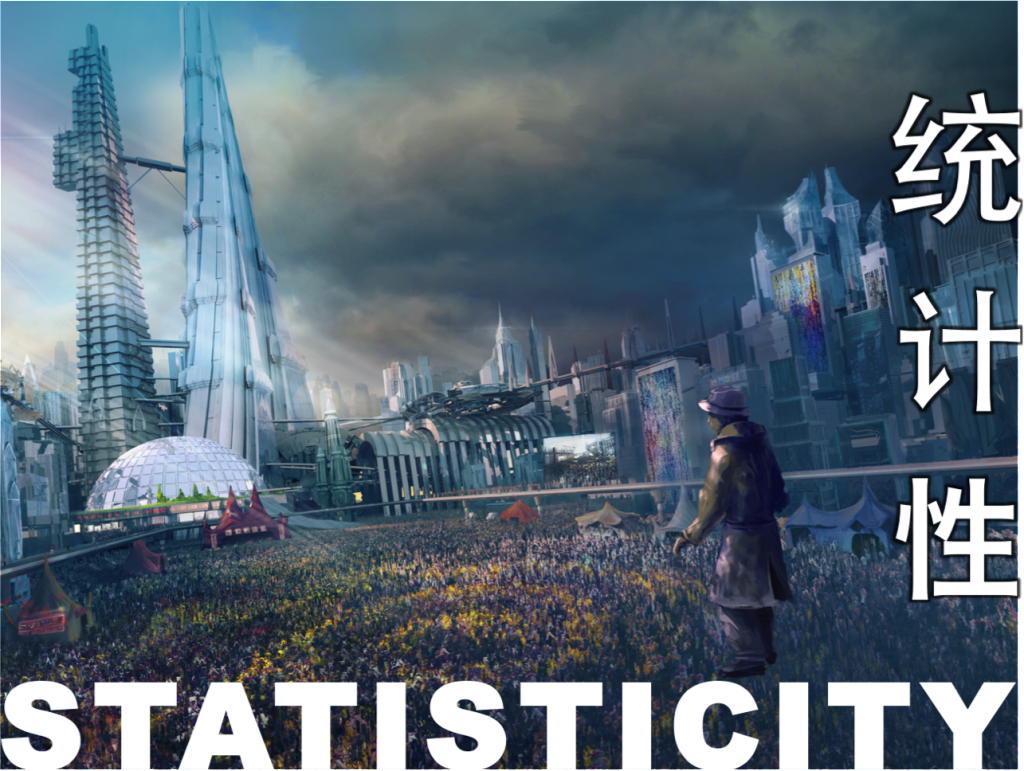My first child was born last week. Shortly after the delivery, I was handed a pair of surgical scissors and asked to cut the umbilical cord. Blood shot out and sprayed everyone within spitting distance, and my baby daughter was rushed aside to be cleaned and stabilized while two nurses went about collecting the remainder of her cord blood and samples of her cord tissue. Later that night, a courier came for the collection kit, and by the next afternoon Aviva’s cord blood was in cold storage somewhere out in Arizona. Probably in a top-secret, state-of-the-art facility deep beneath the desert.
The ritualistic nature of the birth experience lingered with me for days after. By ritualistic I mean to include the physical processes of labor, and the sharing of birth stories with friends and family before and after, rituals that extend back to the roots of humanity. I also mean to include the cutting of the umbilical cord, a distinctly modern ritual with no lineage I can trace, no doubt an attempt to nudge fathers from spectator to participant. But I mean to include as well the banking of cord blood and tissue, an option today that may yet become a ritual in its own right.
Whether to bank your newborn’s cord blood and tissue is almost certainly the first decision with futurist implications that you as a parent will get to make. (There are plenty of pre-natal decisions with such implications, but technically you’re not a parent yet when you make them.) As with most thorny futurist topics, it presents an optimization problem without a simple or universal answer. I’ll try to help by spelling out some of the pros and cons and suggesting a good framework for making your decision.
Cord Blood Banking Explained
Cord blood and tissue are rich in certain types of stem cells, which can be used in some medical treatments today, and likely many more in the future. They can be collected from the severed umbilical cord post-birth, cryopreserved, and stored for later use. You can find an informative overview from the Parent’s Guide to Cord Blood Foundation here.
Some cons of cord blood banking:
- Cord blood and tissue banking costs $1500 – $2500 for the initial collection and $100 – $200 in annual storage fees, money that could arguably be put to better use in protecting the health and safety of your child
- Treatments are only available for certain blood and immune system diseases at present (~70 and counting…), and additional uses are speculative. You may not get much bang for your buck
- Cord blood and tissue stem cells aren’t as versatile as pluripotent (e.g., embryonic) stem cells, meaning that broader therapeutic uses may prove limited as well, subject to more fundamental breakthroughs in research
- Treatments for your child using her own stem cells are further limited as some diseases are genetic and cannot be treated using blood coded with the same defects
- The amount of cord blood collected from your newborn’s umbilical cord is rather small and insufficient to treat adults at present. Unless methods are discovered to stretch this quantity, use may be limited to the first few years of life
- The private cord blood banking sector is new and proto-regulated, and systemic uncertainties persist about storage conditions
Now some pros:
- Cord blood banking is available today and highly actionable. Unlike many futurist interventions you may wish to make for your child, the infrastructure for cord blood banking already exists and is easily engaged
- Cord blood is actively being tested for other uses. Current studies registered with the U.S. federal database are treating people with conditions as varied as diabetes, spinal cord injuries, heart failure, stroke, organ transplants, and neurological disorders such as multiple sclerosis. Other treatments and therapies are likely to emerge
- Your child’s cord blood may also be useful in treating other family members, including you and your spouse and your newborn’s future siblings (or, ala My Sister’s Keeper, her older siblings)
- Much like your newborn, stem cell research is still in its infancy, and present-day unknown unknowns may yield disruptive future applications
- We’re firmly in the space carved out by works like Brave New World and Gattaca Everything I’ve learned form sci-fi suggests that having a stock of healthy stem cells from birth is a good thing (unless of course they’re used to clone and secretly replace your child)
So. Should you bank your newborn’s cord blood and tissue?
The Futurist Calculus
Many of the topics I intend to cover in this series will involve choices for you as a father, choices that entail financial, mental, and temporal investments of varying magnitudes, usually under conditions of uncertainty, with payoffs that may not materialize for decades, if at all. You’ll have to decide for yourself whether any particular investment seems right given all the competing things out there fighting for your money, attention, and time. While no one can answer these questions for you, I can try to outline the futurist calculus:
- Time. Cord blood banking is widely available today, and easily engaged. If the services is offered in your geography, it will require only a small investment of time to take action
- Attention. For the small percentage of families that can already benefit from existing cord blood treatments, the investment of attention required to determine its usefulness for your child is moderate but probably very worthwhile
- Attention. For families hoping to benefit from future uses of cord blood, there’s a lot of information available about the topic. Unfortunately, experts disagree on many aspects, and much of the research is still in its infancy. Unless you’re particularly interested or knowledgeable about this field already, you’ll need to make a serious commitment of time to reduce the inherent uncertainty beyond flipping a coin
- Money. The cost is relatively clear. It may be reasonable for some, but too speculative to justify for the 3 out of every 4 Americans living from paycheck to paycheck, who might be better served by a better stroller or car seat
In many ways, cord blood banking is a perfect litmus test for the futurist parent. It requires an investment today that has limited proven utility but significant potential upside, depending on the course of research over the next few decades and the specific medical needs of your family.
Whichever way you choose, welcome to the future, daddy-o.











